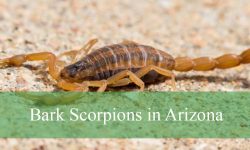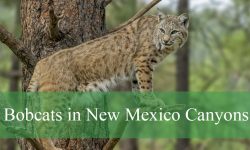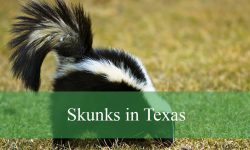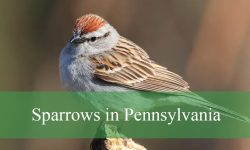South Dakota is home to a wide range of wild animals, thanks to its diverse habitats that include prairies, forests, rivers, and mountains. From open grasslands to rocky hills, the state offers ideal environments for many fascinating species to thrive.
Animals such as the American Bison, Bald Eagle, and Mountain Lion are just a few examples of the remarkable wildlife found here. Each species has its own unique behaviors, appearance, and preferred habitat, making South Dakota a great place for wildlife observation.
This article introduces 20 wild animals in South Dakota, with pictures and identification details to help you recognize them in the wild. These species reflect the rich natural heritage of the state and can often be spotted in parks, remote areas, or even near towns.
Common Wild Animals in South Dakota
American Bison

The American Bison is the largest land mammal in North America and an iconic symbol of the Great Plains. These massive animals have a large hump over their shoulders, a shaggy dark brown coat, and a broad head with short curved horns. Males can weigh up to 2,000 pounds, while females are generally smaller. Their appearance is unmistakable when seen grazing in herds across open plains.
They are herbivores that graze on grasses and sedges, often seen moving slowly across prairies in groups. Bison are typically calm but can be aggressive if provoked, especially during mating season or when protecting calves. They communicate with grunts, snorts, and body movements, and their powerful build allows them to run up to 35 miles per hour when threatened.
In South Dakota, American Bison are most famously found in Custer State Park and Badlands National Park. These protected areas provide the wide, grassy landscapes that bison prefer. Conservation efforts have helped restore their numbers in these locations, making them a key attraction for wildlife viewers and tourists.
White-tailed Deer
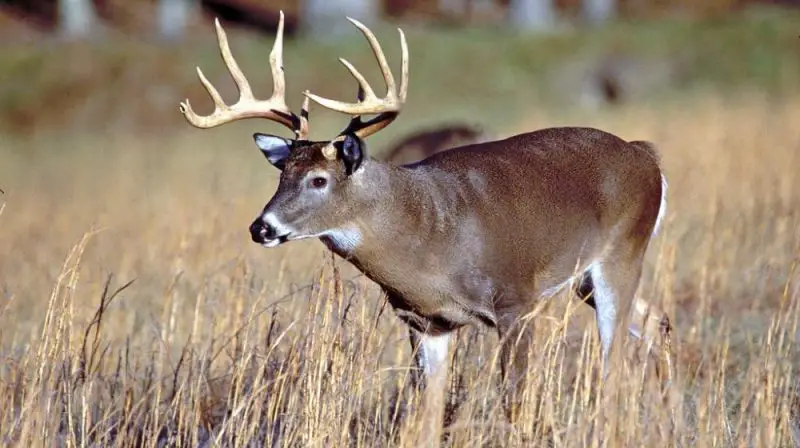
White-tailed Deer are among the most common and easily recognizable mammals in South Dakota. They have reddish-brown coats in summer that turn grayish in winter, along with a distinctive white underside to their tail that they flash when alarmed. Adult males, or bucks, grow antlers annually, which they shed in the winter.
These deer are crepuscular, meaning they are most active at dawn and dusk. They are typically shy and cautious, feeding on a diet of leaves, twigs, fruits, and grasses. During the fall rutting season, bucks may be seen sparring with their antlers and chasing does across open fields and woodlands.
White-tailed Deer are widespread throughout South Dakota, especially in forested areas, river valleys, farmlands, and suburban edges. They adapt well to human-altered environments and are often seen along roadsides or in open fields across the state.
Mule Deer
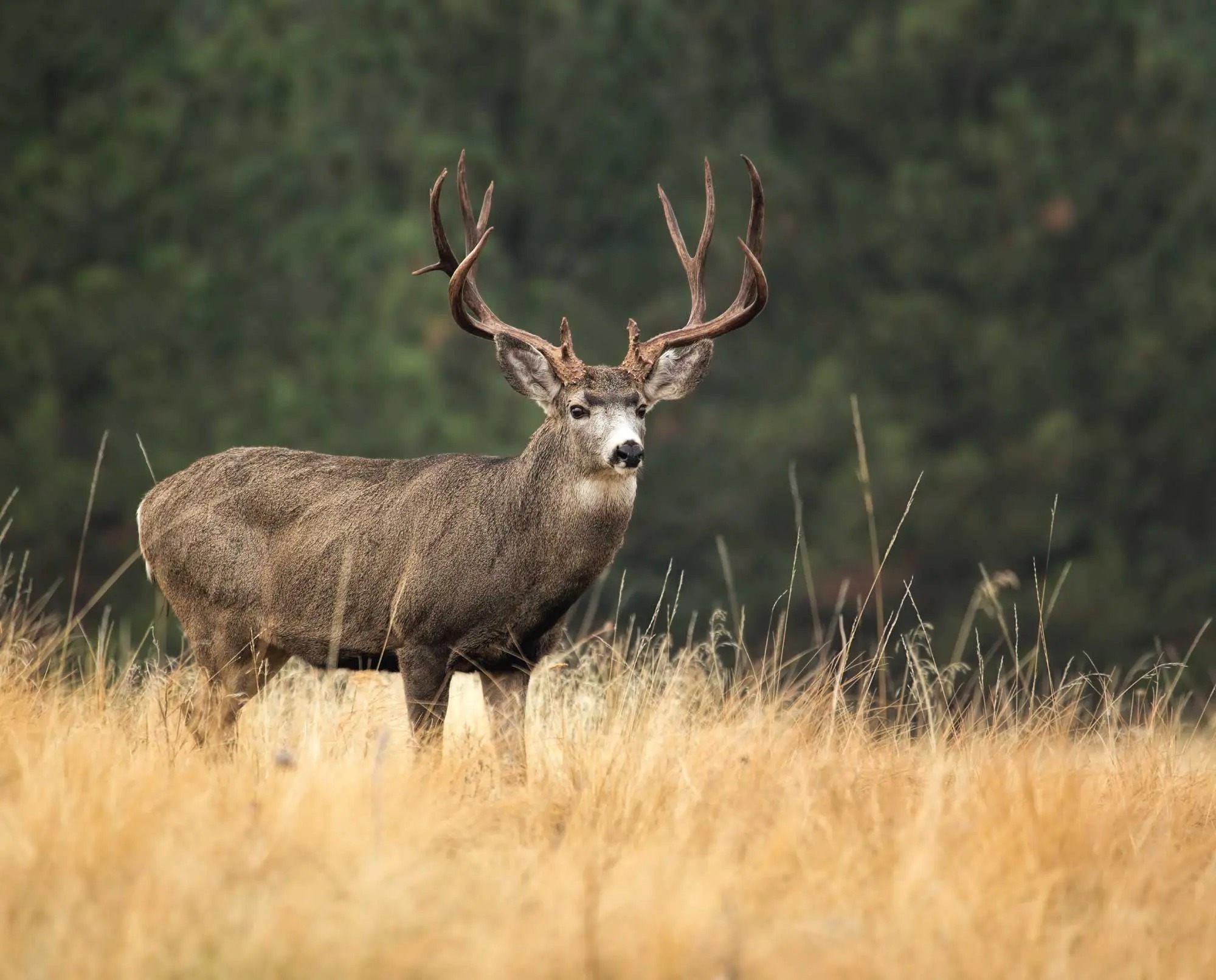
Mule Deer are named for their large, mule-like ears that stand out as a key identifying feature. Their coat is generally grayish-brown, and unlike white-tailed deer, their tails are short and tipped with black. Bucks grow bifurcated antlers that fork in two directions, giving them a unique appearance during the rut.
They tend to move more slowly and cautiously than white-tailed deer and are often found on ridges or rocky hillsides. Mule Deer feed on shrubs, twigs, and grasses, and their large ears help them detect predators in open terrain. They may migrate short distances between summer and winter ranges depending on food availability.
In South Dakota, Mule Deer are more common in the western regions, especially around the Black Hills and drier grassland areas. They prefer open, rugged habitats where visibility is high and cover is sparse, often seen standing still on ridges or crossing dirt roads.
Coyote
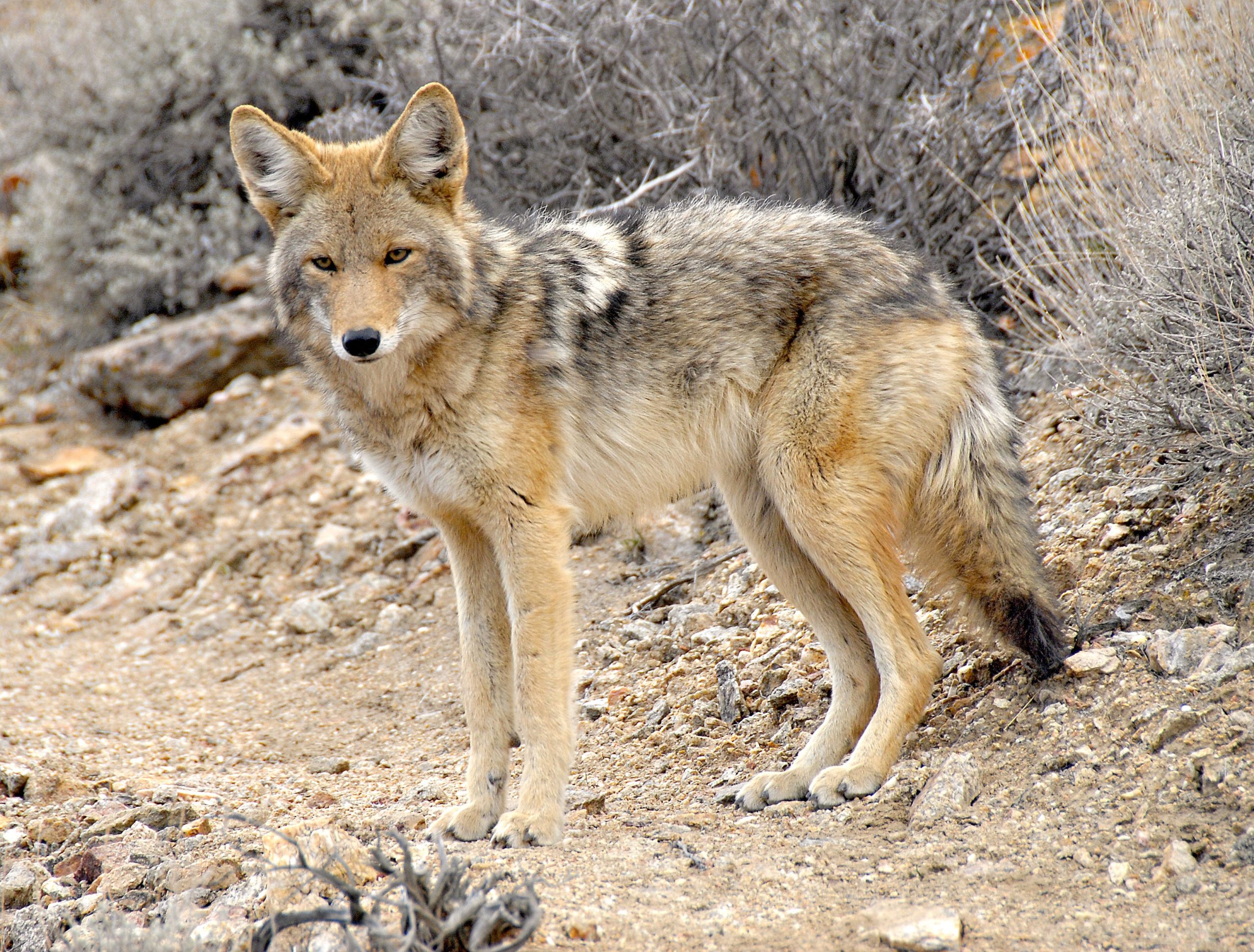
Coyotes are adaptable and clever canines that are common across all of South Dakota. They have a lean build with a bushy tail, long snout, and thick gray-brown fur with reddish hues. Adult coyotes typically weigh between 20 to 50 pounds and resemble small wolves or large foxes.
They are primarily nocturnal or crepuscular, known for their eerie howls, yips, and barks heard during the evening and nighttime hours. Coyotes are opportunistic feeders, hunting small mammals, birds, and even insects, and often scavenging from roadkill or human garbage. They are elusive but may be seen crossing fields or darting across roads.
Coyotes inhabit a variety of environments throughout South Dakota, from prairies and farmlands to suburban and forested regions. Their ability to thrive near human development has helped them expand their range across the state, and they are often spotted in areas like the Great Plains and foothills of the Black Hills.
Prairie Dog

Prairie Dogs are small, burrowing rodents that live in large colonies known as “towns.” They have a tan to light brown coat, short legs, and a small, round tail. Weighing around 1 to 3 pounds, these animals are often seen standing upright near the entrance of their burrows.
Highly social, Prairie Dogs use a series of high-pitched barks and calls to alert others of danger. They are herbivores, feeding mainly on grasses, roots, and seeds, and their digging helps aerate the soil and create habitat for other species. Their colonies are marked by mounds of dirt surrounding tunnel entrances.
In South Dakota, Prairie Dogs are commonly found in grasslands and plains, particularly in places like Badlands National Park and other western prairie habitats. Their presence often indicates a healthy prairie ecosystem, and their colonies can cover vast areas of land with interconnected tunnels.
Bighorn Sheep
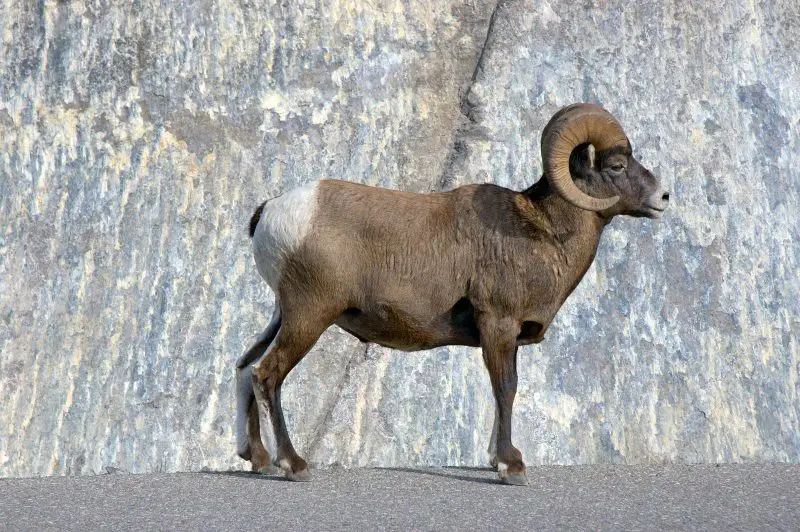
Bighorn Sheep are impressive wild animals known for their massive, curled horns and muscular build. Males, or rams, sport the large spiraling horns used for dominance battles, while females have shorter, more slender ones. Their coat is typically light brown with a white rump patch, and adults can weigh between 150 to over 300 pounds.
These sheep are well-adapted to rugged terrain and are agile climbers. They often feed on grasses, shrubs, and herbs, and can be seen navigating steep cliffs and rocky slopes with ease. Rams are known to engage in head-to-head clashes during the mating season, creating a loud echo across canyon walls.
In South Dakota, Bighorn Sheep are most commonly found in Badlands National Park and other rocky, open areas in the western part of the state. They prefer dry, mountainous regions where they can escape predators using elevation and steep outcrops for cover and safety.
Mountain Lion (Cougar)
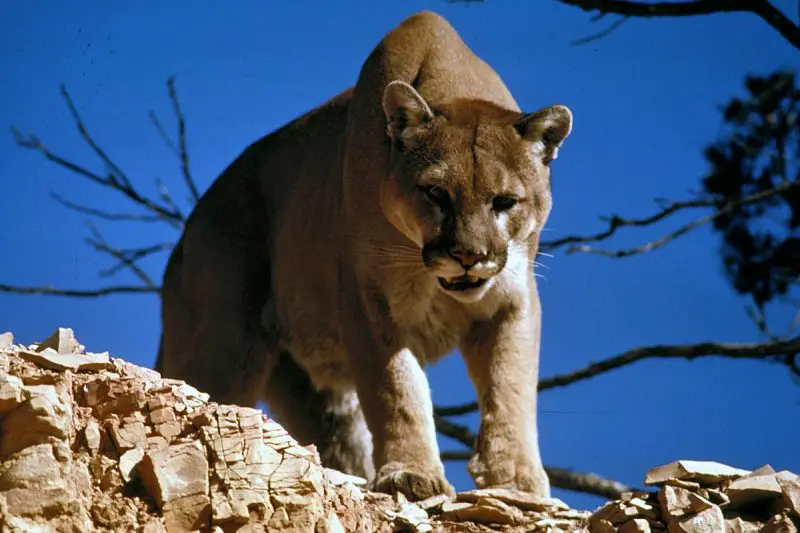
The Mountain Lion, also known as the Cougar or Puma, is a solitary and stealthy predator. It has a sleek, muscular body covered in tawny brown fur, a long tail with a black tip, and a rounded face with piercing eyes. Adult males can weigh over 150 pounds, making them the largest feline predator in South Dakota.
These cats are elusive and primarily active at night or during twilight hours. They hunt by stalking prey such as deer, raccoons, and smaller mammals, using a powerful ambush rather than chasing. Mountain Lions are known for their ability to travel long distances across rugged terrain in search of food and mates.
In South Dakota, Mountain Lions are mainly found in the Black Hills region, where dense forests and rocky areas provide ideal cover. Although rarely seen, their presence is confirmed through tracks, camera traps, and occasional sightings by hikers or hunters.
Elk
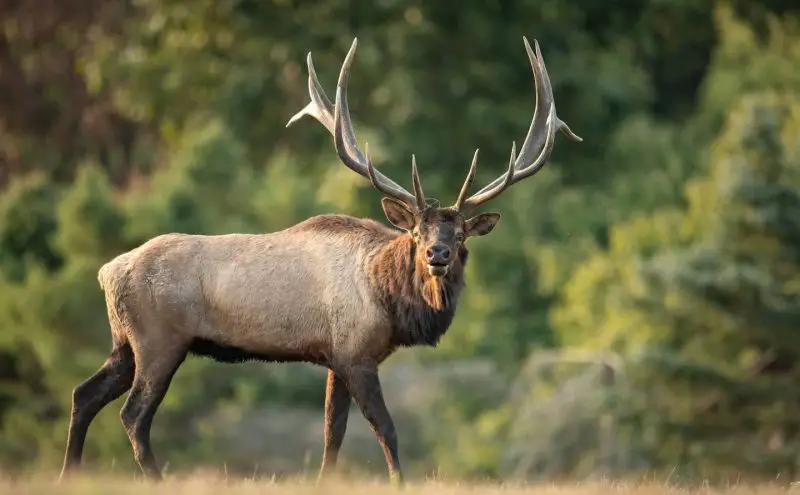
Elk are among the most majestic and largest members of the deer family. They have a reddish-brown coat, lighter on the rump, and the males, or bulls, grow impressive antlers each year that can span over four feet across. Bulls can weigh over 700 pounds, while females, or cows, are slightly smaller.
Elk are most vocal during the fall mating season, known as the rut, when bulls bugle to attract females and challenge rivals. They live in herds and graze on grasses, shrubs, and tree bark. During the summer, they prefer forest edges and meadows, while in winter they move to lower elevations.
In South Dakota, Elk are most commonly found in the Black Hills and adjacent areas, especially in protected lands and state forests. Wildlife watchers often hear or see them during early morning or late evening hours, particularly in fall when their haunting bugles echo through the hills.
Black Bear
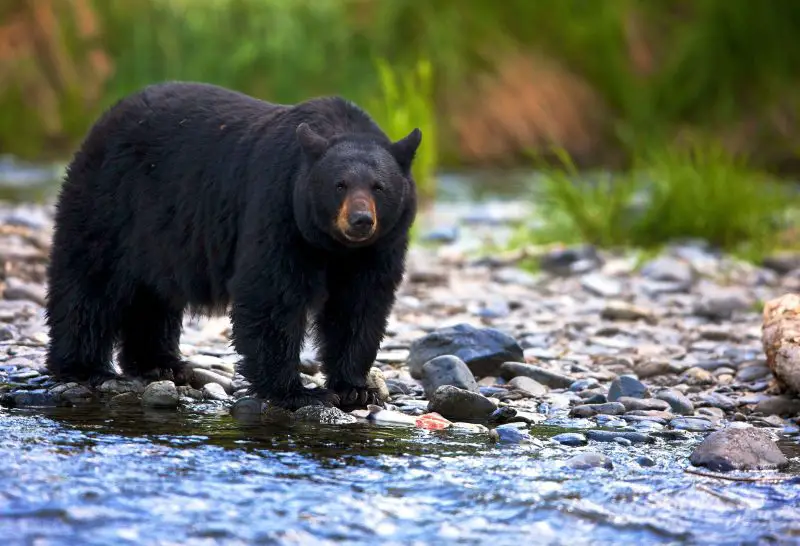
Black Bears are rare in South Dakota but can occasionally be spotted in the remote forested parts of the Black Hills. Despite their name, they can vary in color from black to cinnamon brown. Adult bears typically weigh between 200 to 400 pounds, with a stout body, small eyes, and a short tail.
They are omnivorous, feeding on berries, nuts, insects, carrion, and sometimes small animals. Black Bears are usually shy and prefer to avoid human contact. They are excellent climbers and swimmers and may roam long distances in search of food, particularly in the fall before hibernation.
In South Dakota, sightings are limited and mostly occur in western forests with dense cover and low human activity. Though not commonly encountered, they remain an important part of the Black Hills ecosystem and are protected by state wildlife regulations.
Red Fox
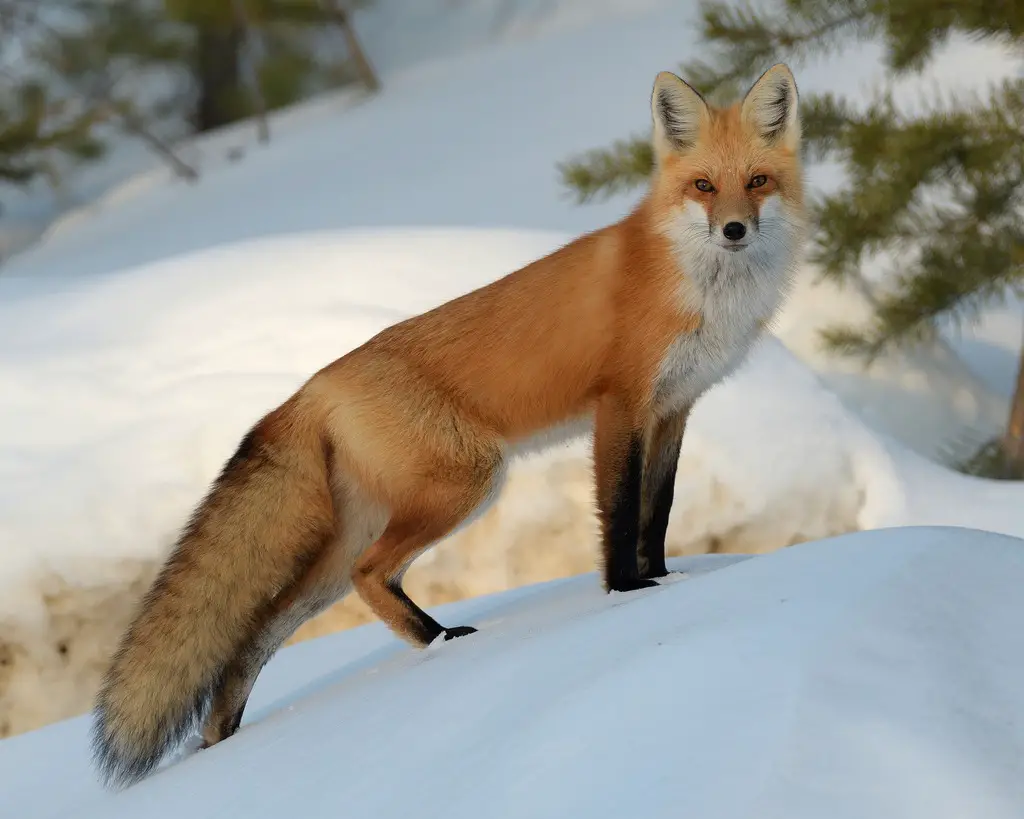
The Red Fox is a small, agile predator known for its bright reddish-orange coat, pointed ears, and bushy tail with a white tip. It has a slender build, weighs between 8 to 15 pounds, and is known for its quick, graceful movements and alert expression.
Primarily nocturnal, Red Foxes hunt at night and feed on small mammals, birds, insects, and fruits. They are intelligent and adaptable, using a variety of vocalizations and body language to communicate. During the winter, their thick coat provides warmth as they move silently across snow-covered fields.
In South Dakota, Red Foxes are found in a wide range of habitats including grasslands, forests, farmlands, and even suburban areas. Their ability to thrive near human settlements and in wild areas alike makes them one of the state’s most versatile predators.
Beaver
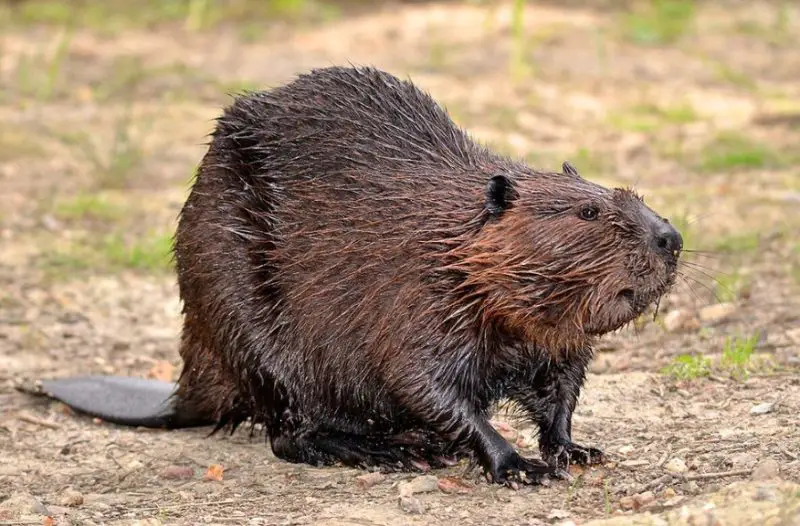
The Beaver is a large aquatic rodent easily recognized by its flat, paddle-shaped tail and orange-colored front teeth. Its thick, waterproof fur ranges from dark brown to black, and adults typically weigh between 30 to 60 pounds. Beavers are known for their powerful build and webbed hind feet, which make them excellent swimmers.
They are famous for building dams and lodges using sticks, mud, and logs. These constructions help create ponds that offer protection from predators and easy access to food. Beavers feed on tree bark, twigs, and aquatic plants, often felling small trees with their strong teeth.
In South Dakota, Beavers are commonly found along rivers, streams, and wetlands throughout the state. They are most active at dusk and dawn and are especially visible in areas with slow-moving water, such as the Missouri River and its tributaries.
Badger

Badgers are stocky, powerful mammals with short legs, a broad body, and distinctive black and white facial markings. Their fur is grayish with lighter underparts, and they typically weigh between 15 to 30 pounds. Known for their strength and tenacity, Badgers are built for digging.
They are primarily nocturnal and live in burrows called setts, which they excavate with their long claws. Badgers feed on rodents, insects, and other small animals, often digging up their prey from underground. Despite their small size, they are bold and can defend themselves fiercely if threatened.
In South Dakota, Badgers are often seen in open grasslands and prairies, especially in the western and central regions. They prefer areas with loose soil for easy digging and are commonly found near agricultural fields and rangelands.
Bobcat
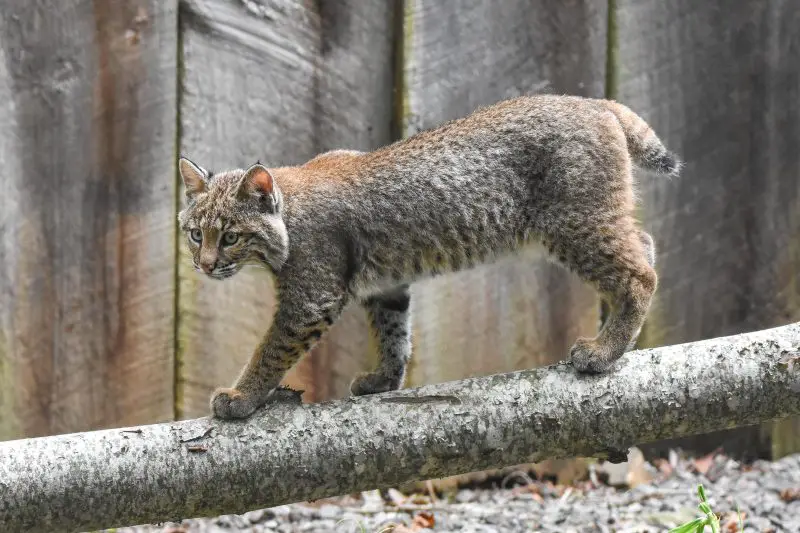
The Bobcat is a medium-sized wildcat with a muscular build, short tail, and tufted ears. Its spotted coat ranges from light brown to gray, and adults weigh between 15 to 35 pounds. The bobbed tail, which gives the animal its name, is tipped in black and white.
Bobcats are solitary and secretive, usually active at night or during twilight. They are skilled hunters, preying on rabbits, birds, and other small animals. Bobcats move quietly and use cover to stalk their prey before pouncing with precision and speed.
In South Dakota, Bobcats are mostly found in forested areas and rugged terrain, especially in the Black Hills and surrounding regions. Although rarely seen due to their elusive nature, they play an important role in the ecosystem as top predators of small mammals.
Bald Eagle
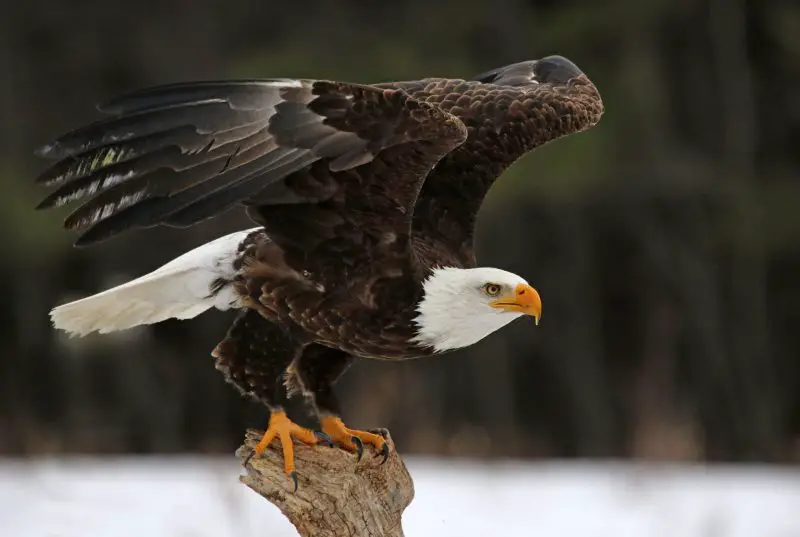
The Bald Eagle is a large bird of prey with a white head and tail, contrasting sharply with its dark brown body. With a wingspan of up to 7 feet and a sharp yellow beak, it is a striking sight in the wild. Juvenile eagles lack the white head and appear mostly brown until they mature around age five.
These raptors are powerful hunters and scavengers, feeding primarily on fish but also consuming waterfowl and carrion. They soar at great heights and use their keen vision to spot prey from above. Bald Eagles build large stick nests high in trees or on cliffs near water sources.
In South Dakota, Bald Eagles are commonly seen along lakes, rivers, and reservoirs, especially near the Missouri River. They are most visible during winter and early spring when they gather in numbers near open water for feeding.
Wild Turkey
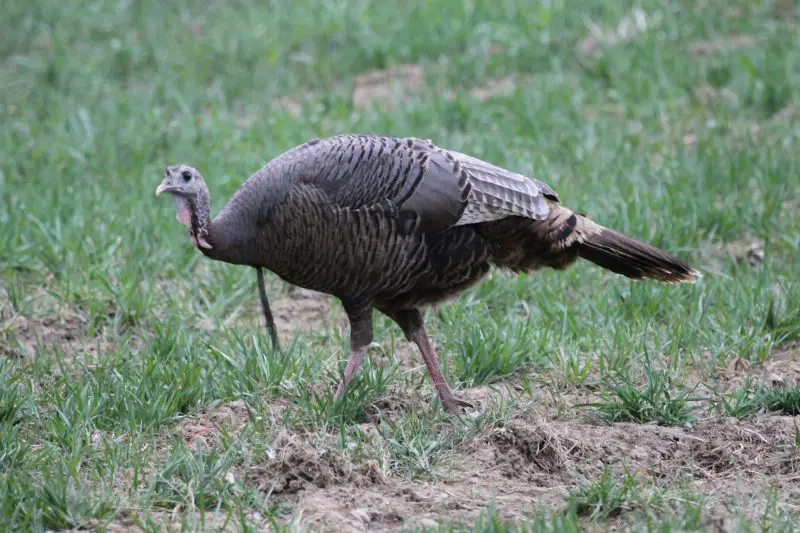
Wild Turkeys are large game birds with a dark, iridescent body, a featherless red and blue head, and a fan-shaped tail. Adult males, called toms, can weigh over 20 pounds and display prominent beards (tufts of feathers) on their chest. Females, or hens, are smaller and more plainly colored.
These birds forage on the ground for seeds, insects, and berries. During the spring breeding season, toms perform elaborate displays—fanning their tails and gobbling loudly to attract hens. Turkeys are strong runners and can fly short distances to escape predators.
In South Dakota, Wild Turkeys are found in open woodlands, meadows, and along forest edges throughout the state. They are especially common in the Black Hills and Missouri River regions, where mixed habitats provide ample food and cover.
Raccoon
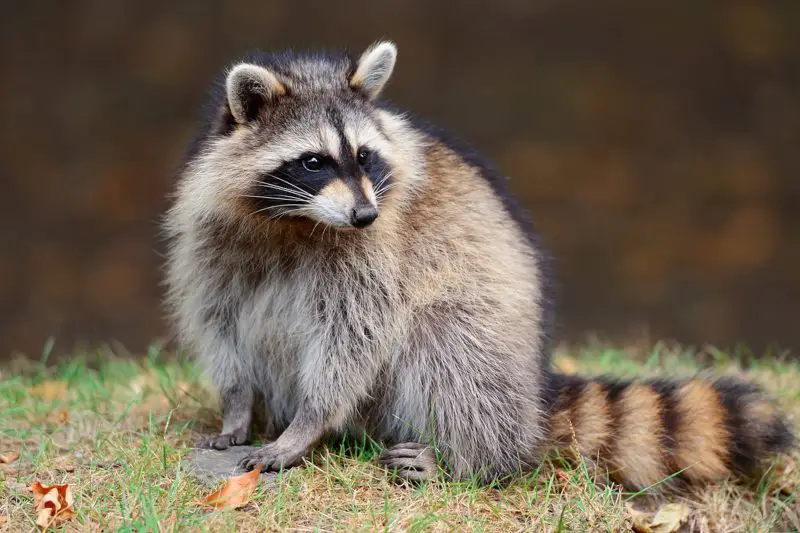
Raccoons are medium-sized mammals best known for their distinctive black mask-like face markings and ringed tails. Their fur is generally grayish-brown, and they typically weigh between 10 to 20 pounds. Raccoons have nimble front paws, which they use to grasp and manipulate food with great dexterity.
Primarily nocturnal, Raccoons are opportunistic feeders and skilled scavengers. They eat a wide variety of foods, including fruits, insects, eggs, and human garbage. Raccoons are curious, intelligent, and adaptable, often seen foraging near campsites, dumpsters, or along riverbanks at night.
In South Dakota, Raccoons are widespread and commonly found in wooded areas, near water sources, and around rural communities. Their ability to live close to humans makes them a frequent visitor to farms, suburban yards, and city parks across the state.
Skunk

Skunks are small, black-and-white mammals most recognized for the foul-smelling spray they use as a defense mechanism. The striped skunk, the most common species in South Dakota, has a black body with prominent white stripes running from its head down its back. Adults usually weigh between 4 to 10 pounds.
They are nocturnal and tend to be shy, feeding on insects, small rodents, fruits, and plants. Skunks are slow movers and will often stomp their feet or raise their tail as a warning before spraying. Their scent can linger for days and is a powerful deterrent against predators.
Skunks are commonly found throughout South Dakota in open fields, forest edges, farmlands, and even suburban neighborhoods. They often make their dens in hollow logs, under porches, or in abandoned burrows and are especially active during warmer months.
Porcupine

Porcupines are slow-moving rodents covered in sharp quills that serve as a highly effective form of defense. These quills are loosely attached and can easily embed in predators who get too close. Porcupines have dark brown fur, a rounded body, and a blunt face with small eyes.
They are primarily nocturnal and solitary, feeding on bark, twigs, leaves, and other vegetation. During the winter, they often climb trees in search of food and shelter. Despite their intimidating appearance, porcupines are generally quiet and non-aggressive unless threatened.
In South Dakota, Porcupines are found in forested and rocky areas, particularly in the Black Hills. They prefer regions with abundant trees and crevices for shelter, and they are occasionally spotted near trails or roadsides, especially at dusk or dawn.
Snapping Turtle
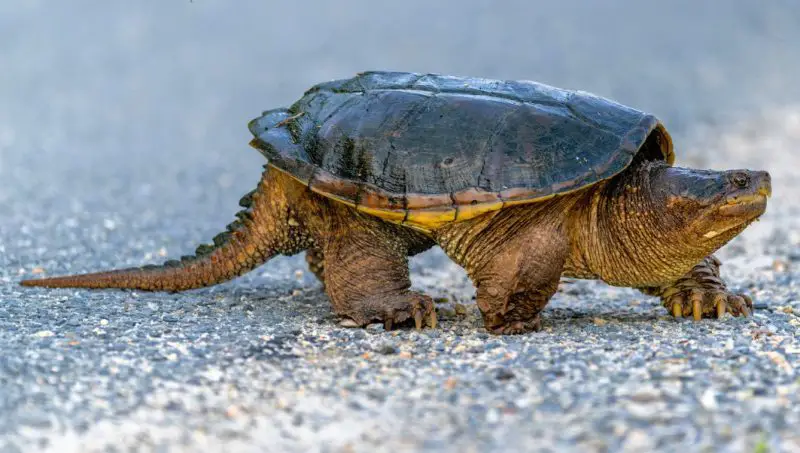
The Snapping Turtle is a large, prehistoric-looking reptile with a rugged shell, powerful beak-like jaws, and long tail. Adults can weigh between 20 to 40 pounds, with some individuals reaching even greater sizes. Their dark, ridged carapace and aggressive posture make them stand out from other turtles.
These turtles are primarily aquatic and are often found in wetlands, ponds, slow-moving rivers, and marshes. They are omnivorous, feeding on fish, frogs, plants, and carrion. Snapping Turtles are known for their strong bite and defensive behavior when encountered on land, especially during nesting season.
In South Dakota, they are widely distributed in suitable aquatic habitats across the state. They are most commonly seen basking near the water’s edge or crossing roads in spring and summer when females search for nesting sites.
Great Horned Owl
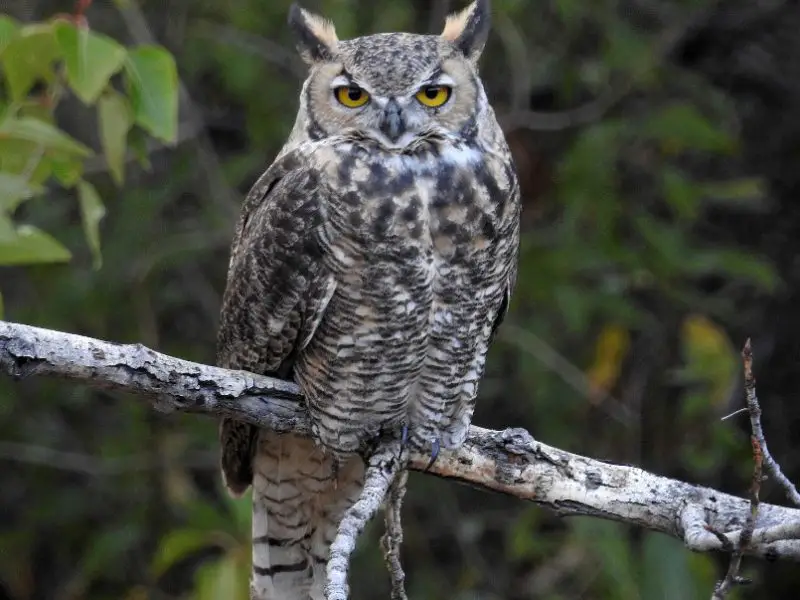
The Great Horned Owl is one of the most powerful and well-known birds of prey in North America. It has a large body, piercing yellow eyes, and prominent feather tufts that resemble horns. Its plumage is mottled brown and gray, helping it blend into forested environments. Adult wingspans can reach up to 5 feet.
This owl is a skilled nocturnal predator, hunting rabbits, rodents, birds, and even skunks with deadly accuracy. It is known for its deep, echoing hoots and silent flight, thanks to specialized wing feathers. The Great Horned Owl is a year-round resident and fiercely territorial during breeding season.
In South Dakota, these owls are found in a variety of habitats, including forests, grasslands, canyons, and even urban parks. They often nest in abandoned hawk or raven nests and are most often heard or seen around dusk and nighttime.


